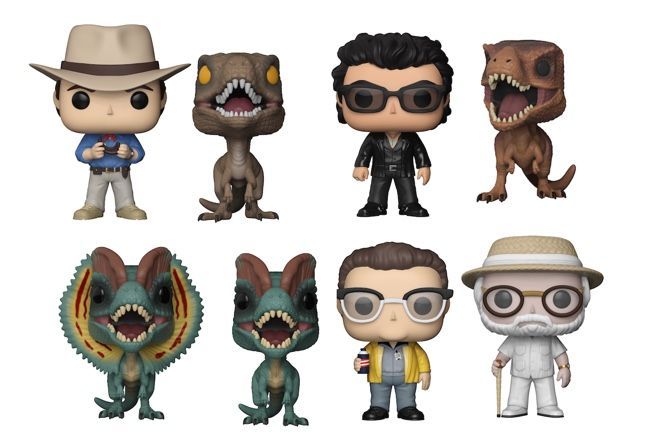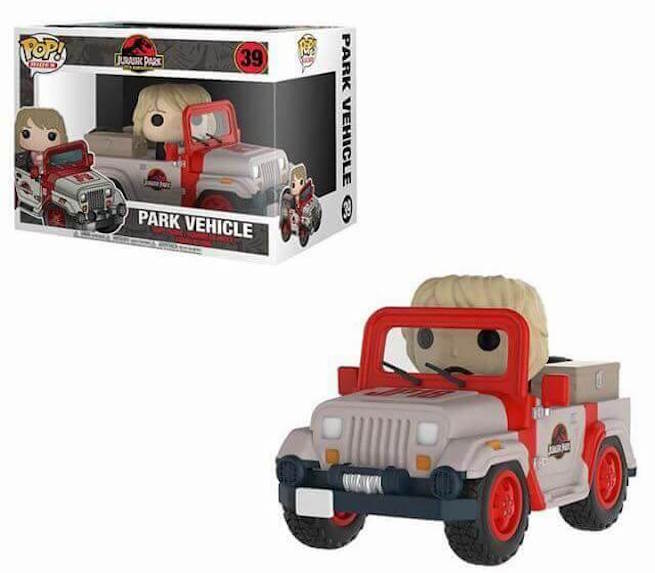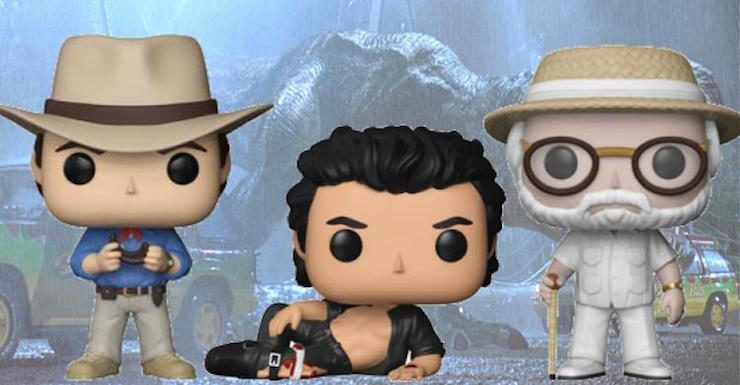You know the drill: a blockbuster sci-fi movie is about to drop. Anticipation mounts. Then, suddenly, stores are hit with a flurry of promotional “stuff.” A significant chunk of said “stuff” are toys. Those toys then lease a spot on a shelf next to other toys promoting a range of media, from that hit film from 25 years ago, now fertile ground for nostalgia, to that re-released comic book from the 1980s, to that TV show you glimpsed this morning.
Observing these rows of little plastic bodies, it is easy to think of them as purely representational. The toys’ sole job is to give buyers a tangible duplicate of an otherwise intangible character. This take-home hero then can become many things to its beholder: avatar, memento, plaything, gift, declaration of love. You fully accept, without even giving it a second thought, that the role of the company that made the toy you just purchased acted simply as a go-between. All the toymaker did was mold your favorite character into plastic. However, this idea of the toy company’s passive role in the process of pop culture consumption is deeply flawed. Toy companies do not just represent meaningful pop culture texts, but fundamentally change them by creating a new text unto itself—the toy—which translates, evaluates, and omits moments and characters from the property it claims to be promoting.
Funko’s recently-announced Jurassic Park line of Funko Pop!s provides an excellent case study that illustrates this.
While Funko does not frequently advertise its Pop!s as “toys,” opting instead for language like “vinyls,” “vinyl figures,” or “bobble heads,” they do usually represent toyetic properties which contain many, active, popular characters, scenes, and vehicles that could be used in multiple waves of products. In other words, as collectible as they are, Funko Pop!s are toys. Currently, Funko licenses numerous pop culture, nostalgic, and niche properties to be made into Pop!s, Dorbz, action figures, and other products. Jurassic Park, a film that many of Funko’s consumers saw during their formative years (and many kids are seeing now as they explore what came before Jurassic World: Fallen Kingdom), fits right in with these licenses. But Funko isn’t interested in Jurassic Park. It is interested in their translation of Jurassic Park. No one will be buying Dr. Ian Malcolm, try as we might. We are buying the Dr. Ian Malcolm Funko Pop!. This object contains several ingredients, only one of which is Jeff Goldblum’s character.
Part of that Funko Pop! will be in conversation with the Japanese roots of these toys. The super deformed style, which is marked by large heads and small bodies, was popularized by Japanese anime in the 1980s, with popular examples found in Gundam and Dragon Ball. Funko Pop!s apply the same style to all their figures, thereby distinguishing their products from most of their source material. But there’s another layer to the translated Dr. Ian Malcolm that Funko will produce: Big Boy. When Mike Becker founded Funko in 1998, his first product was a miniature Big Boy, the mascot for the popular restaurant chain. Big Boy’s current look first appeared in 1956, and, though not as exaggerated as the Japanese super deformed style or modern Funko Pops, also features a prominent head atop a posed body. Given that most Funko Pop!s embrace both the Japanese super deformed style and the look of Big Boy, getting a 1:1 representation of Dr. Ian Malcolm was never even the point. They are not Hot Toys, which aims to produce dolls of pop culture characters as close to their original likenesses as possible. Funko Pop!s, like many toys, translate source characters into their house style. Kenner, in the 1990s, became infamous for remaking Star Wars characters into super-buff versions of their cinematic originals in response to the He-Man craze of the 1980s. Playmates, in the 1980s and ’90s, consistently produced well-muscled versions of cartoon characters like the Teenage Mutant Ninja Turtles and Bucky O’Hare. In all of the above cases, it should be clear that the final toy product does not exist as a carbon copy of a character, but a chimera that is one part source material, one part outside toy influences, and one part intra-company style.

But Funko Pop!s aren’t just translations of individual characters. The company has recently become adept at producing their own versions of film scenes, as well. The incoming Jurassic Park Funko Pop! wave contains two examples of this: a recumbent “shirtless” Ian Malcolm Pop (referencing the memorable scene from the film) and a Denis Nedry/Dilophosaurus 2-Pack, in which Nedry’s face is covered in the (biologically-inaccurate!) black venom that spelled his doom. Funko Pop has made similar sets for their Star Wars and Harry Potter lines, as well as others. Beyond Funko, toy versions of movie and TV scenes have been common: McFarlane made a number of them for their Buffy the Vampire Slayer toys, the BBC with Underground Toys did the same for Doctor Who. While it can be exciting to see which scenes toy companies include, it is perhaps more valuable to analyze which scenes are left out. When toy companies build scene-based playsets, they are building worlds in the way game and VR developers build levels. They are laying down a playing field, however large or small, into which fantasy play—with figurines, action figures, or dolls as avatars—is then expected to occur. In making this decision, toymakers are bringing a critical eye to their source material. They are evaluating a film, comic book, or TV show and choosing which scenes to privilege with production, and which to omit. There is an implied statement being made by this process, a statement which separates the officially validated (in plastic) scenes from the “others.” Here, Funko has selected two iconic scenes, to be sure, but they have neglected others, such as Timmy and Lex in the dino-infested cafeteria, Ray Arnold at Nedry’s work station, Sattler and Grant in the helicopter. One can offer plenty of speculation for why these scenes weren’t chosen: “They wouldn’t sell!” “Can’t make everything!” “They’re not cool enough!” It is important, though, to analyze these scrapped scenes, as this reading allows one to see commonalities in that which is excluded.
Take, for instance, the two scenes Funko Pop! decided to produce (again, Nedry’s death and shirtless Malcolm). Both of them feature characters that are white and male. One of them depicts violence, the other a recovery from violence (and the preservation of male sex appeal). If these scenes were all you knew of Jurassic Park, what might you think of the film? Now, include the three hypothetical unmade scenes mentioned above: Timmy/Lex, Arnold, and Sattler/Grant. Suddenly, female characters are included. A character of color is presented. More passive scenes of connection exist alongside the violent ones. In other words, the public gains a more faithful recreation of Jurassic Park’s overall themes and messages. By Funko setting that aside, for reasons economic or philosophical, we are left with a film whose imaginative landscapes have been not just translated but re-cut by a single company.

As hinted above, the omissions are most egregious when they apply to characters. Here is the list of characters in the first wave of Jurassic Park Funko Pop!s:
- Dr. Alan Grant
- Dr. Ian Malcolm
- Denis Nedry
- John Hammond
- T-Rex
- Velociraptor
- Dilophosaurus
- Recumbent Malcolm (exclusive)
- Nedry/Dilophosaurus (exclusive)
- Ellie Sattler in Gas Jeep
Right away, some trends are obvious: all of the single-packed human characters are men. Both exclusives are men. All are white. If you want to buy the lone, female character (from a film with two prominent women in the cast), you’ll have to pay extra, as you’ll need to buy the jeep that she comes with. This instantly moves the one female character of the line into a higher, more restrictive price point. (Also, if you’re itching to comment, “But all the dinosaurs are female!”, we know. Not the point.) On this sort of exclusion, much has already been said, and some work has been done to correct the male/female toy imbalance. Star Wars: Forces of Destiny and DC Super Hero Girls dolls have provided kids and collectors with an abundance of plastic female characters. Marvel Legends, the Hasbro line rightly criticized for creating an impossible-to-find, short-packed Black Widow action figure, has added more female characters into some of its waves, though representation is still nowhere near equal, and female characters are still short-packed (meaning fewer of them are sent to toy stores, as compared to male characters).
Part of the disconnect can be seen in an interview with Funko’s own creative director Sean Wilkinson. When asked about the addition of female characters into the Funko Pop waves, Wilkinson said, “It wasn’t a conscious decision to add more female characters. We did notice more of a female fan following after the introduction of Pop!s which may have helped steer us that way, or maybe it’s just that Pop! female figures have a tendency to look extra cute!” First, Wilkinson’s admission that female inclusion wasn’t considered by Funko’s team speaks to the need for more women-led toy initiatives, much like Julie Kerwin’s delightful indie superhero toy line IAmElemental. Furthermore, Wilkinson’s classification of female Pop!s as “extra cute” smacks of the objectification of women we so desperately need less of in so many aspects of our culture, including toys.

In terms of female representation, Funko Pop! waves have been inconsistent. While they have produced versions (albeit hard-to-get versions) of otherwise unmade female heroes like Squirrel Girl, the omission of every woman from the Jurassic Park film in Funko Pop!s upcoming wave of single-packed Pop!s illustrates one toy company drastically departing from the spirit and intent of source material. It is probable that future waves of Jurassic Park Pop!s will contain more women, but this, too, is troubling. By relegating women to later waves, which are greenlit based entirely upon sales of Wave 1, toy companies are marking their “extra cute” female characters as also “extra expendable.”Bob DiGiacomo of the toy company Galoob said it best when he was asked why Wave 1 of their Star Trek: The Next Generation action figures left out two of the show’s female leads. His response was essentially to say that Wave 2 would have included Deanna Troi and Dr. Beverly Crusher, except that wave never got made due to a loss of the Star Trek license. DiGiacomo framed it this way: “Yes, if things continued, it would have been obvious to include the other women, along with different aliens and so forth.” This is the place female characters too often find themselves in toys: grouped with “different aliens and so forth,” even when the toys’ source material, like Jurassic Park, pushes back against this type of marginalization.
Despite all of this, toys are still treated as passive aspects of pop culture. Much has been written and filmed about the history of toys, but not enough has been done to truly analyze their impact. Websites that specialize in critical responses to geek media tend to exclude toys, instead focusing on more traditional texts like movies, TV shows, and comics. In doing this, the public has granted toy companies a lot of leeway to translate, evaluate, and alter key pop culture stories, literally and figuratively molding them in their own image. Toys are not the problem. Toy companies are not the problem. It is our resistance to reading toys as independent texts that fails us. By analyzing toys as stand-alone media, as done above, we can continue to ask important questions about diversity and representation in our toy stores, and create the pressure needed to hold toymakers accountable for the way in which they translate the sci-fi and pop culture source material we hold so dear.
Jonathan Alexandratos is a playwright and essayist who writes about action figures and grief. His edited collection of academic essays on toys, Articulating the Action Figure: Essays on the Toys and Their Messages, is out now from McFarland. Find him on Twitter @jalexan.










